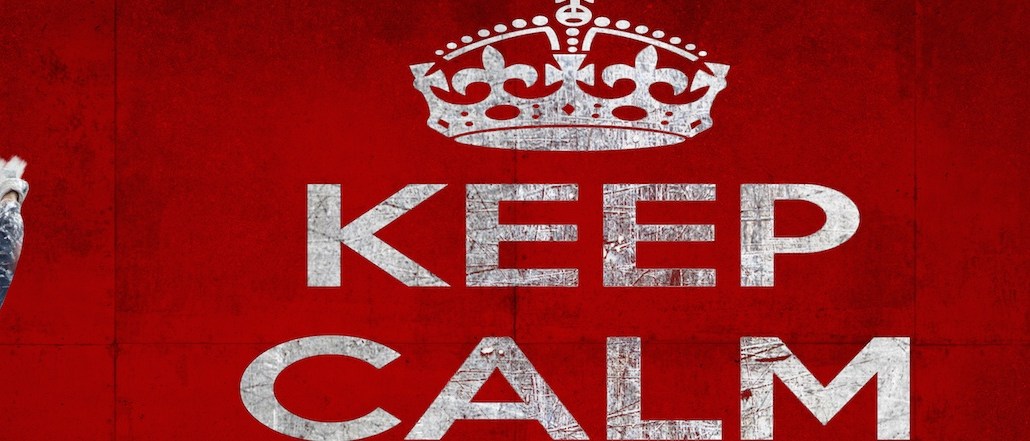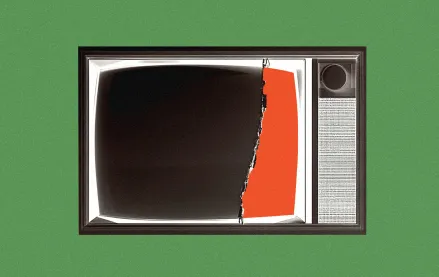
Right before the release of the highly anticipated film “Minions” this summer, Universal Pictures released a poster across its social media channels. The poster featured the Minion character “Kevin” holding a banana with a red background and the words “Keep Calm and Eat a Banana,” along with a crown alluding to the British monarchy printed on top. It got more than 274,000 likes on Facebook.

Universal Pictures isn’t alone. “Keep Calm and Carry On” was discovered in 2000 on an abandoned propaganda poster from the Second World War in a second-hand bookshop in England. Since then, it has become a global cultural meme, plastered on everything from T-shirts to coffee mugs to cuff links. It has also spawned remixes and parodies, in part because brands have come up with their own versions and in part because one U.K.-based company has trademarked the phrase across the European Union and the U.S.
Either way, there seems to be a version for everyone. There’s “Keep Calm and Have a Cupcake” merchandise for sweets lovers and “Keep Calm and Kill Zombies” for wannabe zombie slayers. Brands haven’t hesitated to incorporate it over the years. Retailer Juicy Couture came up with “Keep Calm and Choose Juicy” a few years ago, while Major League Baseball promoted inter-team rivalry by selling sports merchandise such as “Keep Calm and Beat the Red Sox.” E-retailers like Amazon and Etsy have thousands of products with various versions of the slogan.
In the 2000s, America’s global war on terror had begun, to be followed by the recession, which helped the slogan take off and develop a life of its own, said Christian Hughes, principal and president at agency Cutwater. It helped that it could be easily personalized.
“It’s a quirky English mantra that people could adopt, retailers could package and people could broadcast through social media to acknowledge periods of high stress and help each other cope,” he said. “The thing that the Brits have always been admired for is their resilience and humor as they face and overcome adversity.”
The fact that it has become an instant shorthand and that people instantly get it can also be attributed to its widespread and continual use, said Jamie Gutfreund, global CMO at Wunderman. And a solid dose of nostalgia helps, too.
“It is a great cultural bellwether of our time,” she said. “There’s a great backstory to it and a nostalgia component attached. It has been around for so long and has stood the test of time but is still relevant.”
The slogan’s classic design has also contributed to its appeal. The original typeface by the British Ministry of Information was designed to be hard for the Germans to counterfeit it. “It’s just a simple design that can be used in a lot of different ways,” said Fernanda Suarez, social media manager at Huge. “You can put anything in it, and it goes.”
More recently, the phenomenon seems to be waning. A survey of the use of the hashtag #keepcalmandcarryon hashtag on Twitter between September 2010 and present day by social analytics firm Crimson Hexagon, as shown in the chart below, shows that the volume has dwindled after peaking in 2013. Between 2010 and 2015, the hashtag has been used in over 108,586 posts out of which 47,340 posts were from 2013. That number dropped to 14,577 posts in 2014.

Blame that on its ubiquity, experts say.
“It has jumped the shark,” said Gutfreund. “Even if brands put their own spins on it, it’s a double-edged sword. They have to be incredibly unique or it will seem like a ‘me-too’ attempt.”
“Brands are always trying to talk to their audiences in a way they want to be spoken to, so they did this initially,” added Suarez. “Today you can find a lot of images that somehow blend the ‘Keep Calm and Carry On’ quote with a brand; however, most of these are generated by super fans as opposed to being created by a brand.”
Homepage image courtesy of Shutterstock.
More in Marketing

New partnerships, marketing fuel BNPL’s holiday surge
This holiday season, more brands deployed BNPL services with different payment options beyond the more familiar “pay-in-four” structure.

Pitch deck: How Amazon is recasting Twitch as a core part of its CTV pitch
Amazon is positioning Twitch as a defining asset in its CTV ambitions.

Netflix transforms former mall department stores into experiential venues
The location in Dallas opens this week, and one at the King of Prussia mall near Philadelphia opened last month.





